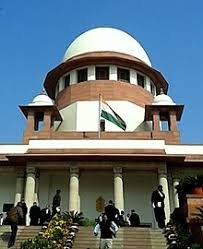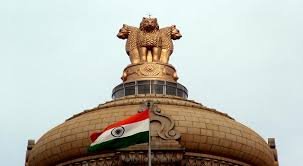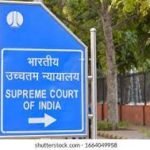The case involves appeals against an interim order issued by the High Court of Judicature at Madras on July 31, 2025. This order was in response to a Writ Petition (No. 27277 of 2025) filed by Thiru. C. VE. Shanmugam, a sitting Member of Parliament from an opposition political party in Tamil Nadu. The High Court’s interim directive prohibited the inclusion of names of living personalities, photographs of former Chief Ministers or ideological leaders, or the party insignia/flag of the appellant (Dravida Munnetra Kazhagam) in advertisements for Government Welfare Schemes. The specific scheme at the heart of the matter was “Ungaludan Stalin,” which translates to “Your’s Stalin,” a welfare initiative launched by the State of Tamil Nadu’s Public (Mudhalvarin Mugavari) Department. The scheme aimed to deliver benefits and services through thousands of camps across the State, with volunteers visiting households. The writ petitioner had also filed a representation/complaint with the Election Commission of India (ECI) on July 18, 2025, just three days before approaching the High Court.
Law Involved: The legal framework guiding the Supreme Court’s judgment included:
Article 226 of the Constitution of India, under which the High Court had exercised its jurisdiction.
Clause 16A of the Election Symbols (Reservation and Allotment) Order, 1968, which grants the Election Commission of India (ECI) the power to deal with matters concerning the suspension or withdrawal of recognition of a political party for failing to observe the Model Code of Conduct.
A series of landmark Supreme Court judgments known as the “Common Cause” cases (Common Cause vs. Union of India, State of Karnataka vs. Common Cause and Others, and Centre for Public Interest Litigation vs. Kewal Kumar Sharma and Others). Specifically, the Court referenced Common Cause I, II, III, and IV. These judgments established guidelines regarding the use of public funds for advertising and the publication of photographs of political leaders.
Common Cause I and IV particularly cautioned against the personal glorification of political leaders or the use of public funds for such purposes. They emphasize that government advertising should maintain political neutrality and avoid creating a negative impression of parties critical of the Government.
Common Cause II permitted the publication of photographs of the President, Prime Minister, and Chief Justice of India.
Common Cause III further allowed photographs of the Cabinet Minister, Minister in-charge of the Ministry concerned, and the Chief Minister of the State to be published.
Reasoning: The Supreme Court determined that the High Court’s interim order was procedurally flawed and an abuse of the judicial process.
The Division Bench of the High Court had granted the interim order without any prior order prohibiting the launch or operation of the welfare scheme.
The allegations against the scheme’s advertisements were based on “unauthentic documents and without any basis”.
The Court emphasized that the writ petitioner’s complaint was initially lodged with the ECI, which is the appropriate authority to address issues of political party conduct, especially concerning the Model Code of Conduct. The writ petitioner rushed to the High Court within three days of filing the complaint with the ECI, providing “no breathing period” for the ECI to act.
The Supreme Court noted that whether the complaint to the ECI was “tenable or not” was a “debatable question”. It strongly asserted that political battles should primarily be fought before the electorate, not by using the courts to settle scores between rival political parties.
The Court highlighted that the “Common Cause” judgments dealt specifically with the use of photographs of political leaders in advertisements and the need for political neutrality in government advertising. While acknowledging that schemes named after leaders of all political parties might not inherently cause concern, the Court implied disapproval of practices that suggest a single political party or leader is being exclusively promoted.
Holding: The Supreme Court delivered the following judgment:
The appeals were allowed.
The impugned order passed by the Division Bench of the High Court on July 31, 2025, was quashed.
The Writ Petition No. 27277 of 2025, which was pending before the High Court, was withdrawn to the Supreme Court and dismissed.
The writ petitioner was ordered to pay costs quantified at Rs.10,00,000/- (Rupees Ten Lakh) to the State of Tamil Nadu.
The writ petitioner must deposit these costs within one week. Failure to do so will result in the initiation of contempt proceedings against the writ petitioner.
The deposited amount is to be used by the State of Tamil Nadu for the implementation of any welfare schemes floated for the underprivileged in the State.
The Court’s decision underscores that the writ petition was “misconceived in law” and an “abuse of the process of law,” reflecting a strong judicial rebuke for misusing court processes for political ends.
DRAVIDA MUNNETRA KAZHAGAM V. THIRU. C.VE. SHANMUGAM
Supreme Court: 2025 INSC 976 (DoJ 06-08-2025)








